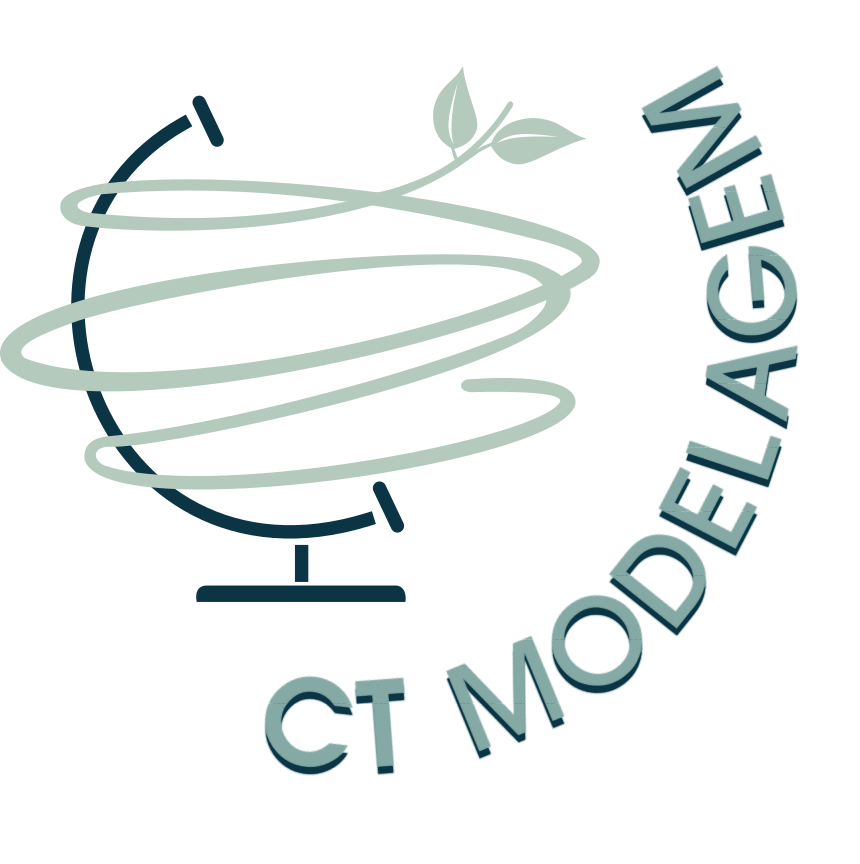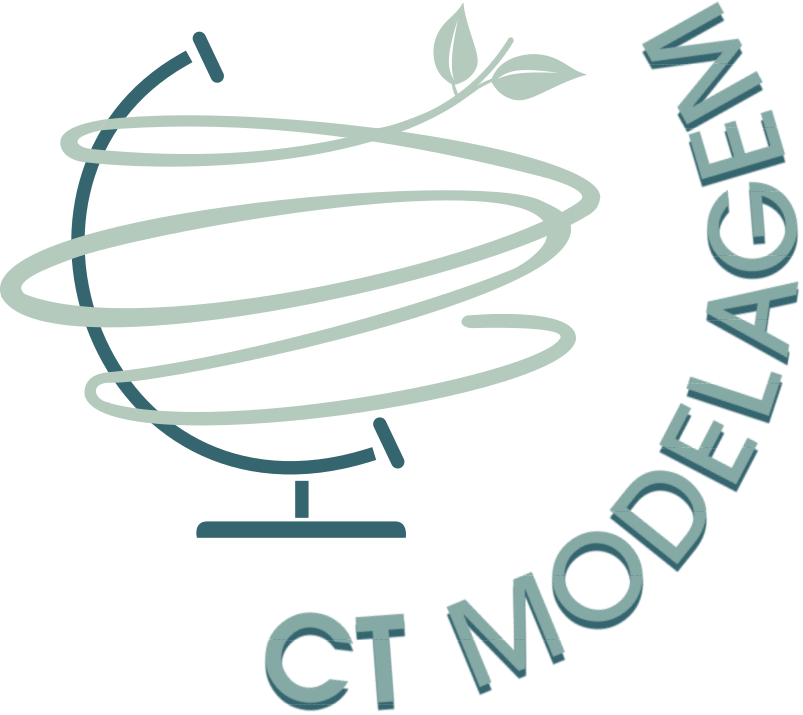INSTITUTIONAL CENTER FOR TECHNOLOGY AND INNOVATION IN ENVIRONMENTAL MODELING
CHAPTER I – THE CT ENVIRONMENTAL MODELING CENTER, AREAS OF ACTIVITY, AND COMPETENCIES
Art. 1 – The Institutional Center for Technology and Innovation (CT) in Environmental Modeling is an innovation-driven environment that brings together intellectual capital and infrastructure in technological areas at the Federal University of Minas Gerais (UFMG). The CT ENVIRONMENTAL MODELING has the mission, in alignment with the Innovation Policy, other statutory and regulatory principles and norms of UFMG, and federal legislation, to conduct research, development, and technological and innovative extension activities aimed at transferring its applications, including operational systems, along with their results to society to support public policies, particularly in environmental analysis, territorial planning, management, and monitoring, through remote sensing, computational modeling, and the application of artificial intelligence in geospatial big data.
Sole Paragraph: Environmental Analysis and Modeling is understood as the multi/transdisciplinary scientific and technological field focused on promoting ex-ante and ex-post knowledge about the organization, functioning, dynamics, and evolution resulting from the interaction between biophysical and socioeconomic systems of territorial expression. Its main instrument consists of computational modeling, including software development, hardware, geographic databases, remote sensing, digital mapping, spatially explicit modeling, geographic information systems, spatial analysis, web mapping, big data processing, artificial intelligence, for designing and evaluating public and private policies regarding their environmental, economic, and social impact. As a result, Environmental Modeling aims not only to influence decision-making processes for the formulation, revision, and implementation of public or private policies aimed at territorial environmental sustainability and conservation but also to operationalize public policies through the provision of instruments and systems.
Art. 2 – The responsibilities of the CT ENVIRONMENTAL MODELING are:
I – To generate, apply, disseminate, and transfer knowledge, technology, products, services, and innovations in its field of activity;
II – To conduct scientific research, technological development, and innovation extension activities in its area of operation;
III – To expedite the production and transfer of knowledge and technology generated in its area of activity;
IV – To generate results with a high level of technological readiness in its field of activity;
V – To provide infrastructures and intellectual capital that enable the testing and validation of new techniques, instruments, and products in its field of activity, when applicable, with the competent certification and/or accreditation bodies;
VI – To maintain a Research and Development (R&D) environment in its field of activity, contributing to the training of qualified personnel at the technical, undergraduate, and graduate levels;
VII – To have the potential to generate technology-based ventures in its field of activity;
VIII – To promote the social insertion of the actions developed in its field of activity;
IX – To support and foster academic-scientific and technological exchange between the internal and external communities of UFMG in its field of activity;
X – To carry out joint scientific and technological research activities and the development of technologies, instruments, products, services, or processes, within the scope of partnership agreements for research, development, and innovation with other Scientific, Technological, and Innovation Institutions (ICTs);
XI – To contribute, through its competencies, to the formulation, evaluation, and implementation of public policies in its field of activity;
XII – To promote cooperation and interaction between public entities, between the public and private sectors, and between companies in its field of activity;
XIII – To develop and provide scientific-based technologies, instruments, and services to public and private institutions in its field of activity.
Art. 3 – To fulfill its mission, the CT ENVIRONMENTAL MODELING must:
I – Maintain a high scientific-technological level in terms of personnel, facilities, equipment, scientific publications, and dissemination of scientific knowledge;
II – Maintain the physical facilities, equipment, and other assets under its responsibility;
III – Act transparently and accessibly as a facilitator in the development of research, teaching, and extension in its field of activity;
IV – Promote internal and external partnerships for the development and expansion of research in its field of activity;
V – Attract human and financial resources in support of scientific research, innovation, and technology transfer in its field of activity;
VI – Organize, promote, or participate in debates, conferences, seminars, symposia, exhibitions, congresses, and other events related to its field of activity.
CHAPTER II – ORGANIZATION AND OPERATION
Art. 4 – The management of the CT ENVIRONMENTAL MODELING is exercised autonomously by its Management Committee, as established by the governance outlined in Resolution 02/2023, in accordance with the interests of UFMG and Public Administration, driving the Institution as a leader in enhancing the National Innovation System in alignment with UFMG’s Innovation Policy.
Art. 5 – The Management Committee will be composed of:
I – The Coordinator of the CT ENVIRONMENTAL MODELING, who will preside over it;
II – The Deputy Coordinator of the CT ENVIRONMENTAL MODELING, who will assume the presidency in the absence or impediment of the Coordinator;
III – Up to 3 (three) affiliated researchers and their respective alternates;
IV – 1 (one) member of the technical and administrative staff, belonging to the UFMG Technical-Administrative Staff, when applicable.
Art. 6 – The titular and alternate members of the Management Committee will be elected at any time by the technical-scientific team of the CT ENVIRONMENTAL MODELING.
Art. 7 – The members of the Management Committee will serve terms of four years, with the possibility of re-election.
Art. 8 – The titular and alternate members will support the functioning of the Management Committee by carrying out administrative and evaluation tasks in accordance with this regulation and those assigned by the Coordinator, respecting UFMG’s statutory and regulatory norms and relevant federal legislation.
Art. 9 – It is the responsibility of the Management Committee to:
I – Plan and oversee the execution of the activities of the CT ENVIRONMENTAL MODELING to ensure its mission is accomplished with excellence and in full;
II – Establish indicators for evaluating the performance of the CT ENVIRONMENTAL MODELING;
III – Prepare the budget proposal and the resource allocation plan;
IV – Approve, in the first instance, contracts, agreements, and partnerships, as well as teaching, research, and extension projects, ensuring that their execution follows the relevant UFMG norms and procedures;
V – Ensure that activities of the CT ENVIRONMENTAL MODELING are executed in accordance with institutional norms;
VI – Request the renewal or cancellation of the accreditation of the CT ENVIRONMENTAL MODELING, if necessary;
VII – Invite researchers to join the CT ENVIRONMENTAL MODELING Technical-Scientific Team;
VIII – Approve requests from researchers to join the CT ENVIRONMENTAL MODELING Technical-Scientific Team by unanimous vote;
IX – Maintain an updated inventory of the CT ENVIRONMENTAL MODELING assets;
X – Keep an updated list of the members of the Management Committee and the CT ENVIRONMENTAL MODELING team;
XI – Decide, by unanimous agreement of its members, on the dissolution of the CT ENVIRONMENTAL MODELING, if necessary;
XII – Call elections for the technical team at any time, by simple majority, to form the Management Committee.
Art. 10 – In the case of dissolution, determine the allocation of the assets of the CT ENVIRONMENTAL MODELING acquired after the accreditation date, after consultation with the Director’s Committee.
Art. 11 – The Management Committee will meet, ordinarily, twice a year, upon convocation by the Coordination, and extraordinarily, at the initiative of the Coordinator or by request of at least one-third (1/3) of its members.
Sole Paragraph: The Management Committee will operate with the presence of the absolute majority of its members and will decide by a simple majority of votes.
Art. 12 – The CT ENVIRONMENTAL MODELING team will consist of:
I – Affiliated and Associated Researchers:
- a) Affiliated Researchers (PF): UFMG faculty members, from the permanent staff, with an active, current position who are demonstrably conducting research related to the scope of CT ENVIRONMENTAL MODELING, provided they are previously authorized by the respective Departmental Committees or equivalent body and given due publicity;
- b) Associated Researchers (PA):
1 – Researchers with an active Voluntary Work Contract with UFMG;
2 – External researchers conducting research related to the scope of CT ENVIRONMENTAL MODELING, previously authorized by their originating institutions, either public or private.
II – Technical and Administrative Staff (CTA):
- a) UFMG technical-administrative staff (TAE), provided they are previously authorized by the originating Departmental Committees or equivalent body, and given due publicity;
- b) Technicians and specialists with an active Voluntary Work Contract with UFMG;
- c) Technicians, specialists, post-doctoral residents, and students linked to projects developed under CT ENVIRONMENTAL MODELING.
Art. 13 – The Coordinator and Deputy Coordinator of the CT ENVIRONMENTAL MODELING must be affiliated researchers with a doctoral degree, faculty members in the Higher Education Career, actively working at UFMG, and with proven experience in the areas of expertise of the CT ENVIRONMENTAL MODELING, elected by an absolute majority of votes from the members of the Management Committee.
Art. 14 – It is the responsibility of the Coordinator of the CT ENVIRONMENTAL MODELING:
I – To preside over the Management Committee;
II – To act as the chief executive authority of the CT ENVIRONMENTAL MODELING in relation to various matters corresponding to the responsibilities of the Management Committee.
Sole Paragraph: In the event of the Coordinator’s absence or temporary impediment, their duties will be performed by the Deputy Coordinator, and the Deputy Coordinator will automatically be replaced by the senior affiliated researcher of the CT ENVIRONMENTAL MODELING, with a new election held in the case of a vacancy in the Coordinator or Deputy Coordinator position within 60 (sixty) days.
III – To represent the CT ENVIRONMENTAL MODELING both within and outside of UFMG.
Art. 15 – The CT ENVIRONMENTAL MODELING may form partnerships with other Institutional Research Infrastructures of UFMG, for a determined or indefinite period, through the signing of a legally pertinent instrument by the coordinators of the respective management committees and approved by the Director’s Council of the CTs.
Art. 16 – The CT ENVIRONMENTAL MODELING may establish partnerships with other innovation-promoting environments in alignment with the Innovation Policy, other statutory and regulatory principles of UFMG, and relevant federal legislation.
Art. 17 – The issues related to the faculty work regime must be observed in accordance with the current legislation and relevant UFMG resolutions on the matter, as well as those regarding conflict of interest, in accordance with the applicable laws.
Art. 18 – The CT ENVIRONMENTAL MODELING will be supervised by a Director’s Council, a deliberative body linked to PRPq.
G.
Art. 15 – The CT ENVIRONMENTAL MODELING may form partnerships with other Institutional Research Infrastructures of UFMG, for a determined or indefinite period, through the signing of a legally pertinent instrument by the coordinators of the respective management committees and approved by the Director’s Council of the CTs.
Art. 16 – The CT ENVIRONMENTAL MODELING may establish partnerships with other innovation-promoting environments in alignment with the Innovation Policy, other statutory and regulatory principles of UFMG, and relevant federal legislation.
Art. 17 – The issues related to the faculty work regime must be observed in accordance with the current legislation and relevant UFMG resolutions on the matter, as well as those regarding conflict of interest, in accordance with the applicable laws.
Art. 18 – The CT ENVIRONMENTAL MODELING will be supervised by a Director’s Council, a deliberative body linked to PRPq.
CHAPTER III – ACCESS TO INFRASTRUCTURE
Art. 19 – Access to the CT ENVIRONMENTAL MODELING is public for any user, whether an individual or a legal entity, provided they have a project and work plan approved by the Management Committee.

